The World’s Biggest Carbon Removal Plant Comes Online in Iceland
(Bloomberg) -- Amid the steam rising around Iceland’s Hellisheioi station sits a newly built warehouse surrounded by giant fans run by carbon removal startup Climeworks. Dubbed Mammoth, the project is now the world’s biggest plant to suck carbon dioxide from the air.
The plant is a critical step in the race to remove billions of tons of carbon a year by mid-century, a move that will likely be needed to keep global warming to relatively safe levels. It also illustrates the increasingly competitive landscape for companies trying to suck carbon from the sky.
Once fully operational, Mammoth will be capable of capturing up to 36,000 tons of carbon dioxide a year using a technique known as direct air capture (DAC). That’s less than a minute of humanity’s emissions, though nine times more CO2 than Climeworks’ Orca plant, which also sits among Hellisheioi’s rocky, moss-covered landscape and began operating in 2021.
Both plants are sited in Iceland in part because of the country’s plentiful clean geothermal resources to power what are essentially energy-intensive CO2 vacuums. In addition, the geology offers a unique way of sequestering the captured CO2. In cooperation with Icelandic partner Carbfix, the CO2 is dissolved in water and injected into the basaltic bedrock where it crystallizes, creating a permanent and safe storing solution.

Still, the plant has the capacity to capture less CO2 than 8,000 average US cars emit in a year. Although current DAC technologies are far from industrial maturity, there is an increasing consensus among the scientific community that carbon removal will be crucial to limiting the impacts of climate change.
Switzerland-based Climeworks is the current leader in developing DAC technology, but a number of startups are utilizing other techniques, including relying on materials like limestone as well as electricity and even water in the air. If all of the 22 proposed DAC projects come to fruition, they could remove 12 million tons of CO2 by the end of the decade, according to BloombergNEF analysis.
“Profitability is the best thing that could happen to this industry, and the higher the profitability the better because profitability means more scale,” said Christoph Gebald, Climework’s co-founder and co-chief executive officer. “If we can show a 10% to 15% returns on investment for projects we are building, there will be a lot of capital from large asset managers like pension funds and sovereign wealth funds.”

Most companies are focused solely on removing and storing CO2. One notable exception is oil company Oxy, which is building a direct air capture plant it says will capture dramatically more CO2 than Mammoth. The company wants to use at least some of it to extract more oil, though.
Climeworks has aims to remove 1 million tons of CO2 from the air by 2030 and 1 billion tons by 2050. While Iceland has been a proving ground for its technology, Climeworks is also starting work elsewhere in a bid to scale. That includes projects in Norway, Kenya, and Canada as it explores further potential direct air capture and storage sites. Gebald said it has five to 10 plants “on the drawing board” between now and 2030. The biggest is in Louisiana as part of a so-called DAC hub funded by the Biden administration. (The company is also a partner on two smaller projects backed by the same Biden administration program.)
The goal for that project — which is being done in partnership with research institute Battelle and DAC startup Heirloom — is to remove 1 million tons of CO2 by the end of the decade. The team running the site received $50 million in federal funding to kickstart development in March and it will have access to some of the $3.5 billion set aside by the US Department of Energy for the DAC hub program.

One of the challenges Climeworks and other companies will have to overcome is the very high cost of removing CO2 from the atmosphere using DAC. It will cost $1,000 to remove a ton of CO2 from the air using Mammoth, which is slightly less than Orca, according to Gebald. He said he expects the cost of DAC to fall somewhere between $200 and $300 per ton in the next 15 years. Getting costs to $100 per ton by mid-century is seen as a key threshold for carbon removal being a viable industry. Energy use is also a major concern, particularly since other forms of carbon removal can be less energy-intensive.
That will require being “clever” and arranging renewable energy and carbon removal technologies “like a Rubik’s cube,” according to Ben Kolosz, an assistant professor of renewable energy and carbon removal at the University of Hull. “All of these pieces of tech need to work together in order to remove 10 billion tons of CO2 per year by 2050, and DAC is only a small part of that,” he added.
©2024 Bloomberg L.P.
KEEPING THE ENERGY INDUSTRY CONNECTED
Subscribe to our newsletter and get the best of Energy Connects directly to your inbox each week.
By subscribing, you agree to the processing of your personal data by dmg events as described in the Privacy Policy.
More renewables news

GE Vernova to Power City-Sized Data Centers With Gas as AI Demand Soars
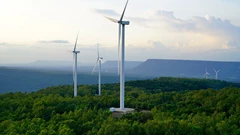
Longi Delays Solar Module Plant in China as Sector Struggles
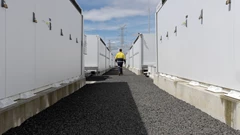
Australia Picks BP, Neoen Projects in Biggest Renewables Tender

SSE Plans £22 Billion Investment to Bolster Scotland’s Grid
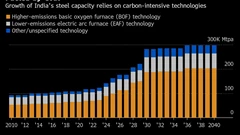
A Booming and Coal-Heavy Steel Sector Risks India’s Green Goals

bp and JERA join forces to create global offshore wind joint venture
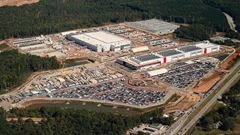
Blackstone’s Data-Center Ambitions School a City on AI Power Strains
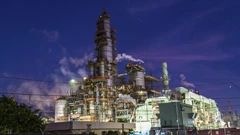
Chevron Is Cutting Low-Carbon Spending by 25% Amid Belt Tightening
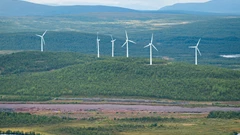
Free Green Power in Sweden Is Crippling Its Wind Industry
















